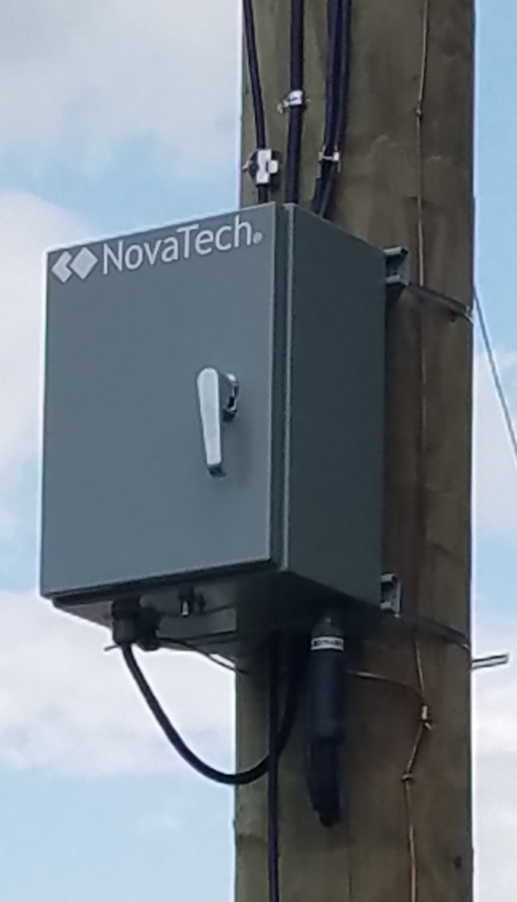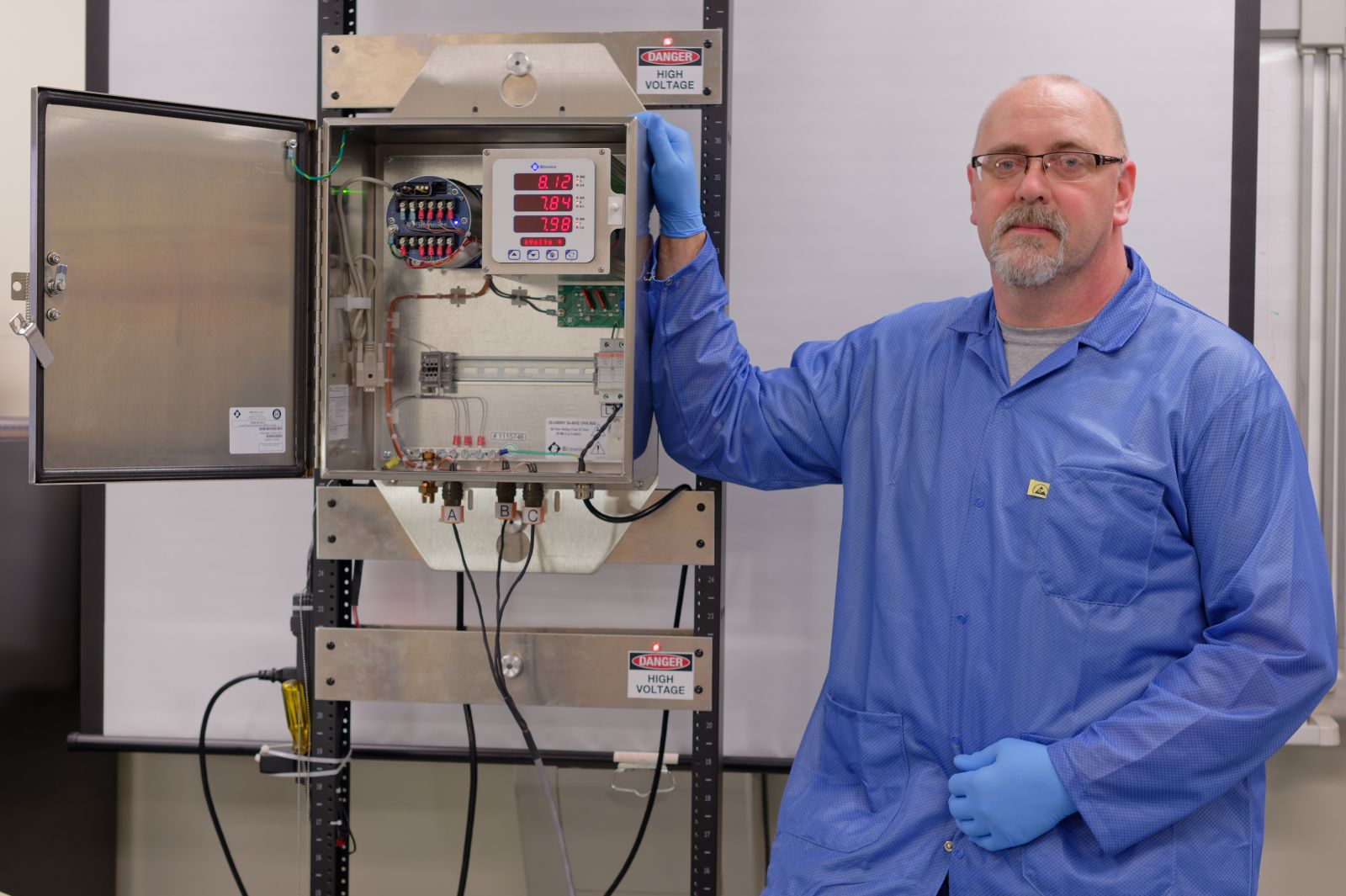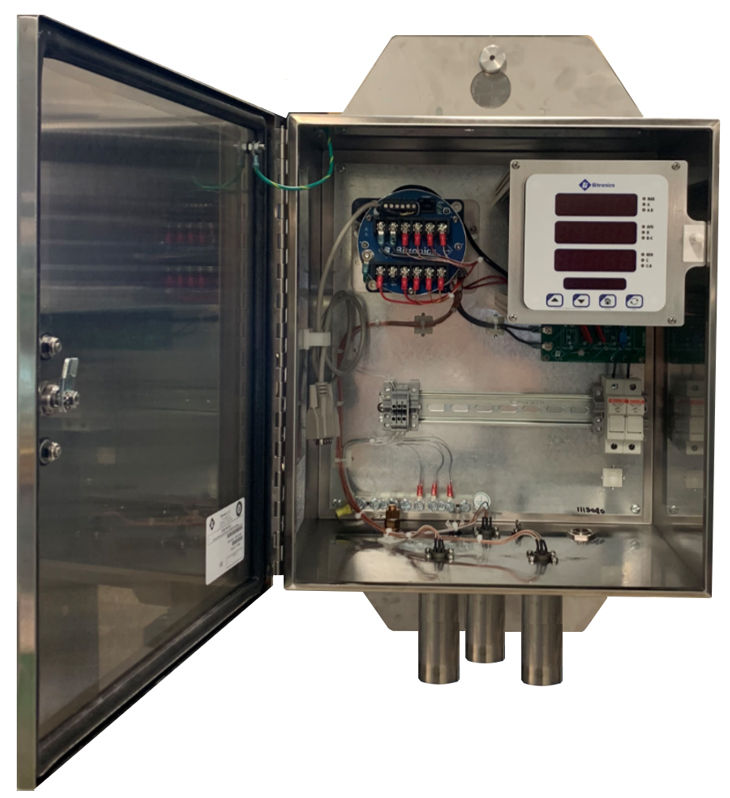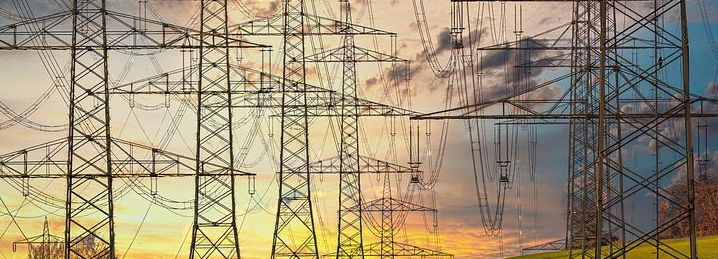Voltage Volatility: Advances in distribution grid monitoring
 The power distribution grid is undergoing unprecedented levels of change. The traditional, one-way model of voltage regulation presumed that voltages would drop predictably along feeders from substation to customers. The proliferation of larger scale Distributed Energy Resources (DER) along feeders, however, means that traditional models and regulation techniques are incapable of maintaining delivered voltages within ANSI C84.1 guidelines.
The power distribution grid is undergoing unprecedented levels of change. The traditional, one-way model of voltage regulation presumed that voltages would drop predictably along feeders from substation to customers. The proliferation of larger scale Distributed Energy Resources (DER) along feeders, however, means that traditional models and regulation techniques are incapable of maintaining delivered voltages within ANSI C84.1 guidelines.
This is spurring new approaches in grid measurement, monitoring, and control that provide real time measurements, enabling Distribution Management applications to better manage voltages and maintain high power quality.
Voltage Fluctuation from DER
The traditional power delivery model pushes electricity from a centralized power generation plant, through distribution feeders, to the point of consumption. Power is consumed along the line: utilities are using tap changers, voltage regulators, and capacitor banks to regulate voltage, and ensure delivery remains within an ANSI guideline range of +/- 5% all the way to the end of the line. Historically, the key concern was ensuring voltages did not fall below or above these standards.
Enter DER, electricity-producing resources or controllable loads that are connected to a local distribution system. DER can include solar panels, wind turbines, battery storage, generators, and electric vehicles.
These points of power generation inject power along the distribution feeder, which may increase or decrease voltage levels outside ANSI guidelines. In other words, increasing integration of renewables results in variable load and generation fluctuations, which work against the constant voltage profile model.
In addition, solar and wind DER are, by nature, intermittent. Managing unpredictable intermittency without measurement, monitoring, and control is even more difficult, and can result in oscillatory voltages in the system. Voltage rises at injection points may also create reverse systemic power flow.
 As a result, utilities require more advanced power monitoring and control systems that can precisely and quickly measure voltage to enable their Distribution Management Systems (DMS) to respond and regulate the voltage on their feeder lines. But this means DER integration needs real-time data to implement their control strategies.
As a result, utilities require more advanced power monitoring and control systems that can precisely and quickly measure voltage to enable their Distribution Management Systems (DMS) to respond and regulate the voltage on their feeder lines. But this means DER integration needs real-time data to implement their control strategies.
Unpredictable voltage delivery can not only disrupt service to household, commercial, and industrial customers all along the feeder, it can also damage motors and equipment.
More Precise Monitoring and Control
The challenge of effectively controlling unpredictable, variable, and potentially bi-directional voltage flow starts with measurement. The only way to control this kind of variability is to have measurements along distribution feeder lines. These measurements are accurate, and can communicate data to control systems fast enough to modulate the voltage and keep it under control. All in real-time.
Voltage delivery monitoring and control can be the domain of DMS. These systems have evolved over the years. Currently, advanced DMS models use Volt/Var optimization (VVO), where capacitor banks, voltage regulators, and solid-state systems are switched on and off to maintain acceptable levels of power factor and voltage. More recently, Distributed Energy Resource Management Systems (DERMS) have emerged in response to the increasing amount of renewables-based distributed energy resources. These are complex control systems for monitoring and controlling sources of energy.

DERMS require accurate, real-time measurement of voltages, loads, reactive power, fault data, and even weather data. A key consideration has been how to design and install these monitoring systems in a way that is cost-effective for utilities. This has called into question the traditional approach of grid monitoring with conventional magnetic current transformer (CT) and potential transformer (PT). The installed cost of CTs and PTs is expensive and time-consuming, plus the feeder must be powered down for their installation.
An alternative lower-cost approach is to employ low voltage (0-10V ac) sensor technology for all voltage and current measurements. These sensors are safe, accurate for all required measurements, and can be installed without taking an outage.
Three raw voltages and currents can be wired to a Distribution Grid Monitor (DGM) pole-top measurement system, making dozens of useful measurements, including voltages to better that .5 percent, loads, power factor, real, and reactive power. An ANSI 51 overcurrent element enables reporting of fault pickup and peak fault currents, all of which are reported to DMS and DERMS through DNP3 over radio.
Initial DGM deployment at a New England utility drove further DGM enhancements, including new measurements for 'Normalized Voltage' to accommodate sensor readings instead of PTs and CTs, additional surge suppression, and 'safety shields' to prevent tampering of cable connectors.

Trends indicate DER integration will increase significantly each year. So, too ,will the need to maintain voltages, power factor, and frequency within desired limits. New grid measurement and monitoring technologies are essential to keep these factors under control.
Conrad Oakey is the Vice President, Strategy and Communications for NovaTech, a supplier of automation and engineering solutions for electric utilities and process manufacturing industries for over 30 years. The Orion Substation Automation Platform performs automation and security applications in electric utility substations.
NovaTech | www.novatechweb.com
Author: Conrad Oakey
Volume: 2020 May/June








